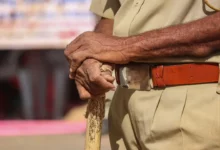Marking The Meerut Cantonment, The Site Of The 1857 Uprising
For a very long time, Meerut has taken great satisfaction in being known as the “Krantidhara,” or “land of the revolution.” It alludes to the Revolt of 1857, which got its start on May 10 at Meerut.
The British East India Company’s control came to an end as a result of the Revolt, which the British described to as a mutiny. Even though the Revolt failed to unseat the Colonial rulers, it did realise a century-old prophesy that the Company’s authority in India would only survive a century when the British Crown assumed control of the country after the Revolt.
As in 1857, the Baba Augarnath Temple, the Revolt’s birthplace, is located in the centre of Meerut Cantonment. Prime Minister Narendra Modi referred to it as the “starting point of India’s march to independence” when he visited it last year.
“In 1857, a fresh light was shown in the tunnel of slavery by the cry for liberation emanating from Baba Augarnath Temple, which sparked the march to Delhi. We marched forward and won our independence with the help of this revolution, and now we are celebrating the Amrut Mahotsav,” Modi was reportedly quoted as speaking in Meerut on that day.
How the birthplace of the Revolt of 1857, which the establishment refers to as the First War of Independence and which the Modi government has decided to abolish one by one, can be a “colonial legacy” is a question that arises now that the Modi government has decided to do so.
The Meerut Cantonment has long been a haven of civil-military fusion, rooted in history and saturated in more than two centuries of such mixing. But is its time now up? Currently, there is a disagreement about whether Meerut Cantonment is a remnant of colonial times that should be preserved or a piece of Indian history.
“The Meerut Cantonment is a synthesis of Indian and British traditions. Even while there are places like the Augharnath Mandir, Bilveshwar Mandir, Shahid Smarak, and a few churches, the most of the historical monuments were built by the British primarily for their own reasons and have nothing to do with Indians. According to historian and author Anil Kumar Gandhi, this cantonment was formed in 1806 and is located outside of the major city of Meerut.
The Cantonment of Meerut’s History
The Meerut Cantonment was established in 1806 after the British seized control of the area from the Marathas and functioned as a British military bastion in northwest India.
In his book 1857: Sajhi Shahadat Ke Phool, military historian Amit Pathak writes that Meerut’s location was crucial to the British interests in this region. It allowed them to maintain control over Delhi, which had served as both the actual capital of India and its symbolic centre for almost seven centuries at the time. This gave them the freedom to conduct expansionist operations in Punjab and farther into Afghanistan.
However, the cantonment was not the first British presence in Meerut. The Belvedere Complex, which was completed in 1802, is one of the most opulent British structures. Some locals refer to it as the White House because of its similarity to the American president’s home. For more than a century, the facility has served as home to the defence accounting services.
The old Belvedere Complex in Ayudh Path, Meerut Cantt, is home to the CDA (Army) Meerut office. Although the Belvedere Complex building was constructed in 1802, it wasn’t used until some time in 1897.According to the website of the Comptroller of Defence Accounts-Army (CDA-Army), which has called the structure home since 1922, “it is stated that before it was utilised as a ballroom dancing hall.
Regional offices for both the CDA (Army) and CDA (Funds) are located in Meerut. The CDA (Army) enjoyed a position of considerable distinction throughout the British era and even for decades following the Declaration of Independence. It was known as the Viceroy’s Office unofficially during the British era because it had direct control over the armed forces. The CDA (Army) building played a crucial part in the military activities of the cantonment as the auditor of the Indian Army and the British Indian Army before it. All of it is history today, according to a former CDA (Army) officer who worked for the agency for around 40 years and asked to remain anonymous.
Gandhi debates the issue of heritage as the ex-defence accounts officer waxes lyrical about his previous company and its formerly lofty position in the scheme of things. He emphasises that not every crevice in the cantonment may be considered historical.
“Not every structure may be considered historic. Is a building, for instance, history just because it formerly housed a British officer 200 years ago? It is now just a mess for Army nurses. Is it truly worthy of the moniker of our proud Indian heritage? Except for as British employees, Indian citizens were not permitted within the cantonment. Of course, structures built in Britain that were directly connected to the Great Uprising, such St. John’s Church and the Race Course, might be considered historical sites. Gandhi draws the conclusion that while there are certain aspects of Indian tradition, the cantonment generally still bears the marks of colonialism. “The cantonment too was divided into British and Indian parts,” he argues.
In the “Indian part” of the cantonment stands the Augharnath Mandir, a well-known Lord Shiva shrine where stayed the forerunner of the Revol of 1857 who incited the Indian sepoys. This land had been separated into two halves by the British, with the Indian section to the north and the British section to the south. The latter section was posh since it was intended for British usage. According to Gandhi, Abu Ka Nallah practically divides the cantonment into two halves and is a silent witness to British prejudice. The southern half of the cantonment housed Indian soldiers’ units, known as “native regiments,” while the northern half housed artillery batteries, churches, and all of the main offices.
the lasting effects of history
Even when the British have long since departed India and the cantonment at Meerut no longer exists, the historical and cultural legacies will probably be too strong to go very soon. Since it is so fundamental, many people no longer even notice it.
The colonial name Regimental Bazaar is mispronounced as Rajban Bazaar, which is located close to Mall Road. The British Redcoats, or red-clad British troops, are the inspiration for the name of the Lalkurti neighbourhood on Mall Road. The annual Ram Lila and Dussehra festival, attended by people from all around the city, is held at The Top Khana, which is located where British gun batteries originally stood.
Even though the Sikh, Punjab, and Dogra regiments have long since transferred their headquarters outside of the Meerut Cantonment, the Punjab Lines, Sikh Lines, and Dogra Lines continue to appear in people’s home addresses and the two Kendriya Vidyalaya are still known as KV Punjab Lines and KV Sikh Lines.
Another location where one might get lost in history is St John’s Cemetery, which is tucked away in the centre of the historically British section of the Meerut Cantonment. One may often hear the automatic gunfire of training Army troops on neighbouring ranges among 19th-century graves. The villagers at the other end of the cantonment, close to Fazalpur, had lived beside tanks and armoured personnel carriers for around three decades, and even the roar of several tanks didn’t affect them. Yet another day had passed.
There is no disputing that there is dissatisfaction among certain people as a result of the problems with the Cantonment Board. However, many people disagree with the concept of dividing the world into civilian and military areas using lines drawn on a map. First, where do the renters of bungalows from the colonial period go? How would you create a line on a map for the Army troops that sometimes share walls with them? A way of life that has existed for more than 200 years is about to come to an end, and some people ponder if it is really feasible.
The upscale homes in the British Cavalry Lines are just a short distance from the headquarters of an army division, and some of the largest old-grant colonial period houses are directly in front of the Military Hospital. The Lalkurti Police Station is located on Mall Road. One wonders how they would demarcate a spot where the two sides have been mingling for more than two centuries, similar to what is said about Jerusalem where one holy edifice lies over another’s and access to one’s hallowed place must pass via the respected structure of another.
The irony of Modi’s visit to the Cantonment—the first Indian prime minister to do so—and the determination of the bureaucracy to put boundaries around people’s life is not lost on anybody in this situation. The destiny of the beginning point of “India’s march to independence” will be decided by time.







